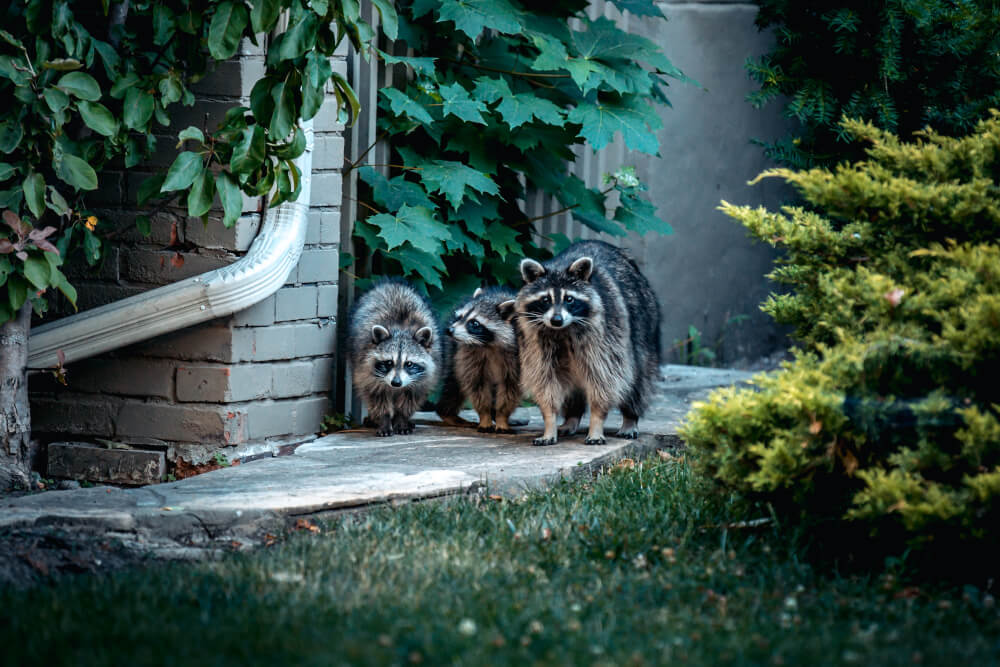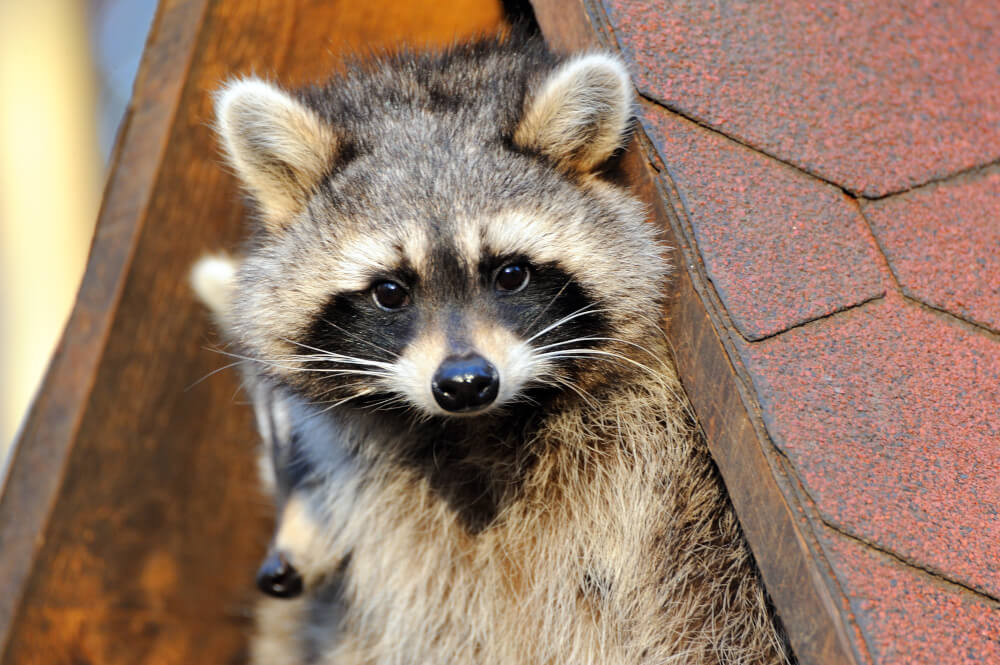
Raccoons are very common in cities and suburbs. As omnivores, they feed on garbage, vegetable gardens, bird seed, and everything else they can find. These are arboreal creatures that thrive near humans.
While they might look cute, raccoons are very destructive animals that should not live in your home. Raccoons in the attic will leave huge piles of feces that create odors and put you at risk of getting sick. They’ll also put holes in your roof, costing you thousands of dollars in repairs.
Look for the following signs if you suspect that there are raccoons on your property and call your nearest wildlife removal company.
1. Piles of Feces
Raccoons leave droppings in the same places, repeatedly. This creates large piles of feces known as latrines. Latrines can usually be found in high places, such as the roof, the attic, the top of a shed, or on top of a fence.
Finding a latrine on your property may point to a den nearby. Don’t get close to a latrine because it may contain a harmful parasite known as raccoon roundworm.
Remove raccoon feces with caution. Wear protective equipment, wet the feces with disinfectant, then bag them up for disposal. Finish by pouring boiling water over the dirtied space to destroy roundworm eggs.
2. Sounds in the Attic
Raccoons are very noisy. If you hear the occasional tumble, scratch, squeal, or stepping sound in the attic, there may be raccoons denning inside. Given their size, raccoons might also sound like humans walking around or dragging their feet and it might look like watching a movie.
Listen carefully and note the time of day in which you hear noises. Raccoons usually make the most noise at night. Squirrels, on the other hand, make noises during the day. Call a professional to confirm the presence of wildlife.
3. Holes in the Roof
Raccoons are excellent climbers with strong, dexterous paws. They usually get into attics by pushing through the soffits, breaking roof vents, or tearing at the edges of the roof. If there is noticeable damage on your roof, there may be a raccoon living in the attic. Raccoons can fit through openings that are roughly 3 or 4 inches wide.
4. Damage in the Attic
Raccoons denning inside the attic often crush or tear the insulation. They might also dirty the area with feces, urine, swiggy food, and debris. Because they like to chew and touch everything around them, raccoons have been known to break cables, causing power outages and fire.
Prolonged invasions may result in stains on the ceiling, as urine seeps down from the attic floor. You might also notice a bad smell coming from the attic.
5. Lots of Raccoon Activity
Are there lots of raccoons your area? Have you seen them crawling around on the roof? Raccoons in urban areas have small territories. If you’ve noticed a lot of raccoon activity on your property, there is a good chance that they are denning in the attic or somewhere in the yard.
How to Get Rid of Raccoons Safely

Contact a wildlife removal professional for an inspection. He or she can confirm the presence of raccoons and evict them humanely by using a one-way door. This is the most humane method of removal.
The one-way door will be installed on the entrance of the animals’ den. So, when they want to go out and feed, they will push their way through, then be unable to get back inside. Once out, the technician will replace the door with a material that is raccoon-proof.
What you can do to help prevent this from happening again is to remove food sources from your yard. Put away bird feeders and don’t leave any pet food out. Cover vegetable gardens with mesh and cover the barbecue.
If there aren’t any raccoons, a professional can raccoon-proof your property to ensure that they never break-in. They can cover things like roof vents and chimneys safely. Look for a well-reviewed company that offers warranties with its services.
Elizabeth Hartley
Related posts
Stay connected
Today's pick
- The Importance of Professional Handyman Services for Your HomeYour home is your sanctuary, a place of comfort and security, but maintaining it can be a daunting task. From routine maintenance to unexpected repairs, there’s always something that needs attention. While many homeowners might be tempted to tackle these jobs themselves, not all tasks... The post The Importance of Professional Handyman Services for Your […]
